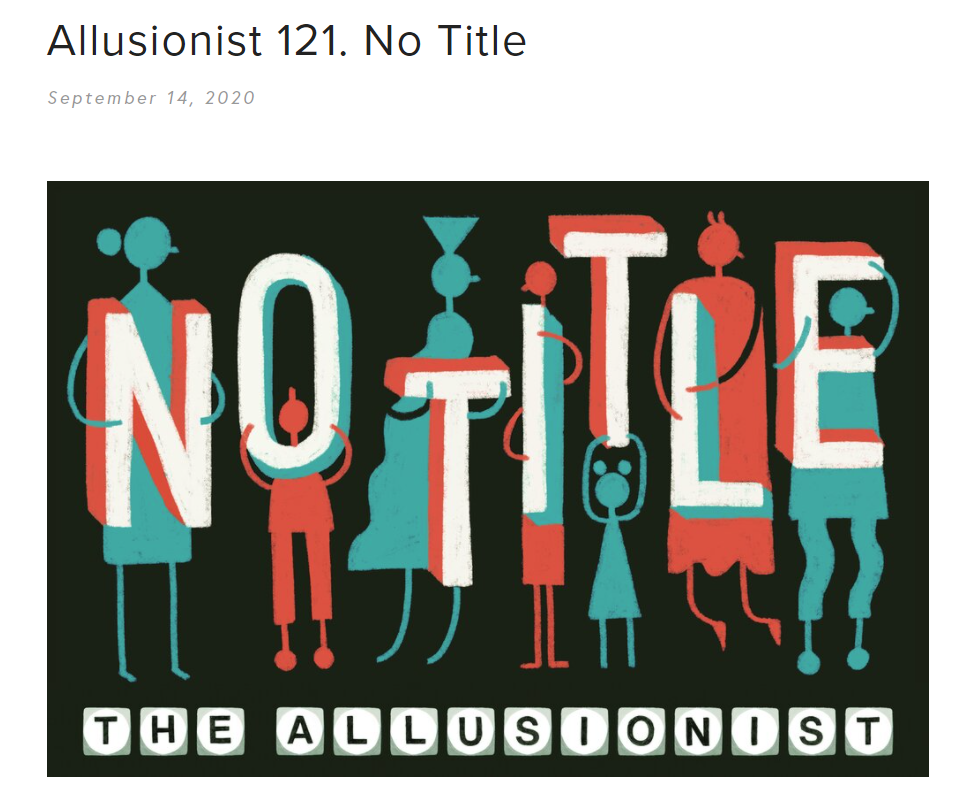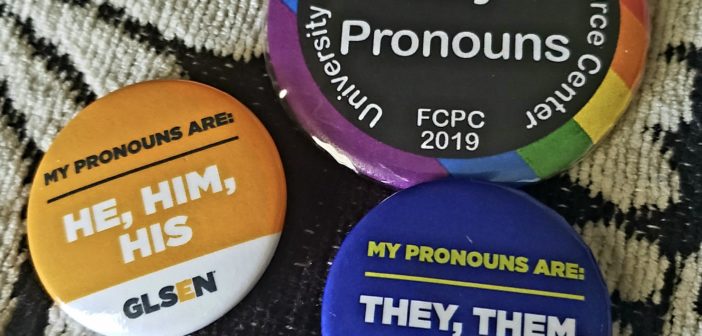By: Emily Miller, Senior Copy Editor
In 2017, the Associated Press (AP) Stylebook was updated to accept the use of the singular “they.” This means that individuals who do not wish to be referred to as either “she/her/hers” or “he/him/his” within articles can now be referred to with “they/them/theirs” pronouns.
For those who do not use or know anyone that uses they/them pronouns, using the singular “they” can seem strange. Today, written English typically uses they/them pronouns to refer to a group of people, not an individual. However, written English has historically included the singular “they.”
According to the Oxford English Dictionary website, a middle-English translation of the poem “William and the Werewolf” includes the singular “they,” stating, “Each man hurried . . . till they drew near . . . where William and his darling were lying together.”

Purdue University’s Online Writing Lab (Purdue OWL) notes William Shakespeare, in “Much Ado About Nothing,” wrote, “To strange sores, strangely they straine the cure.”
The singular “they” has not been left in the past. Dr. Chris Friend, Assistant Professor of English and faculty sponsor of Prism, Saint Leo’s Gay-Straight Alliance, provided additional context.
“The thing with the ‘singular they’ is that we use it all the time in oral conversation,” Friend said.

A singular ‘they’ is typically used in casual conversations when the gender of a person is unknown.
“If I tell you ‘oh I went to the bank today and I applied for a loan,’ your response would be ‘really, what did they say?’,” said Friend. “And we would both understand immediately that your question actually was ‘what did the person I spoke to at the bank say to me’ because the bank doesn’t say anything, but that person does.”
Using “they” in this sense means one would not have to assign a gender to this unknown person which saves time and energy. Saying “he or she” instead of “they” is not unheard of, but it is also not necessary in understanding what is being communicated.
“Any time I mention something in conversation, and the other person in conversation needs to ask more questions about that thing, the easiest way for us to do that, and the natural way for us to do that, is to use the singular ‘they’,” said Friend.
Using the singular “they” in writing is not grammatically incorrect nor would its use be particularly distracting to the average reader—that is, if it is used properly. According to Friend, its improper use is most obvious with the verb “to be.”

“You naturally want to say ‘they is’ because you are thinking of a singular person and you know that, with a singular person, you use the word ‘is’,” said Friend. “As soon as you say ‘they is’ your brain explodes, because that goes against your lifetime of linguistic training.”
The solution is to stick with said lifetime of linguistic training and to write “they are.” This might be weird the first time because using “they are” does not fit the typical image of one person, Friend explained. But, eventually, our brains would adapt because of the pronoun’s use in conversation.
Friend emphasized that when a person is first introduced is the most important time to clarify that “they” refers to just the one person. He gave an example which applies to journalism.
“For instance […] ‘We spoke with So and So and they told us such and such’,” said Friend. “If you introduce that person in that phrasing, you have all of a sudden made it abundantly clear, that person is a ‘they’ and that ‘we’ means the organization doing the journalism.”

Properly using the singular “they” does not just concern its grammatical correctness. Friend expressed that asking for someone’s pronouns upon meeting them and then using those preferred pronouns is important. Picking a pronoun to use for a person that is different from the one that person prefers, is presumptuous.
“If you pick one, you are making a decision and a determination of my representation and self-image of gender and my portrayal of gender that I did not tell you was appropriate for me,” said Friend.
Not only would it be disrespectful to use, for example, “he/him” for a person that uses “she/her” pronouns, it would be inaccurate.

Gender identity and sex are two different things, according to the World Health Organization (WHO). The WHO article dubbed “Gender and health” states that, “[g]ender identity refers to a person’s deeply felt, internal and individual experience of gender, which may or may not correspond to the person’s physiology or designated sex at birth.” Friend expanded on the difference between sex and gender.
“Gender is a thing that you enact through your everyday life. You do gender so that people perceive you a particular way,” said Friend. “Gender is not assigned at birth. Gender is performed, sex is assigned at birth—and it’s also not as clear cut as we think it is.”
Friend explained why a singular person might use they/them pronouns and the concept of nonbinary gender identities. He used Barbie and G.I. Joe to illustrate the two extremes of binary genders, male and female respectively. Barbie is the ideal for women—her figure, her self-expression, her role in society and G.I. Joe is the ideal for men—his rugged build, tough nature, and his role in society.
“Now, I would argue that pretty much everybody except Barbie and G.I. Joe themselves probably want a little less of an extreme presentation of their gender,” said Friend. “The way I view myself is further away from Barbie than it is from G.I. Joe.”

For this reason, Friend said, he feels comfortable using he/him pronouns. Some people’s gender identity may fall on various points on this male-female spectrum, or they may fall outside of that spectrum altogether.
Pronouns play a large part in expressing one’s gender and their gendered experiences, so using one’s preferred pronouns acknowledges one’s gender and the way they view themselves. Friend gave some advice regarding this concept.
“I encourage everybody to normalize the presentation of pronouns even, and especially, if the pronouns that you use seem obvious to you and those around you,” said Friend. “By saying ‘these are the ones I use,’ you’re opening the door for other people to feel comfortable and safe around you to tell you what theirs are.”






1 Comment
Top site ,.. amazaing post ! Just keep the work on !